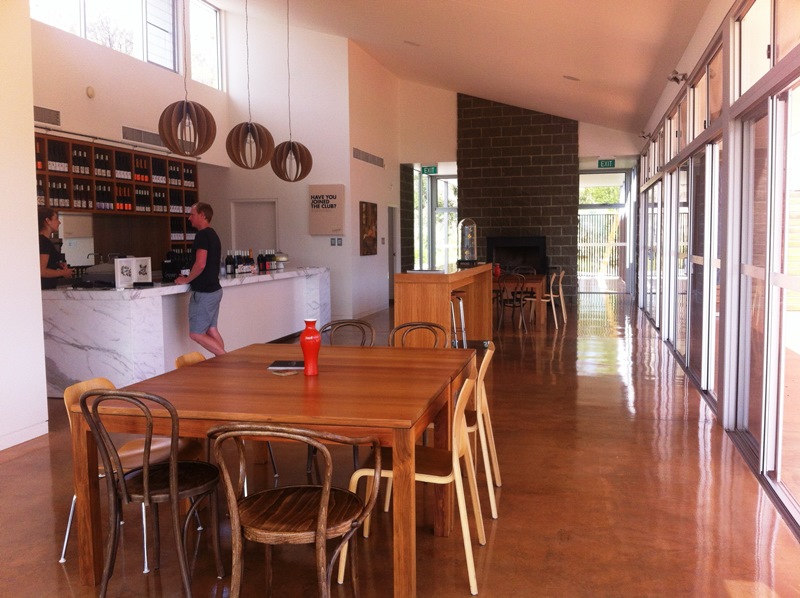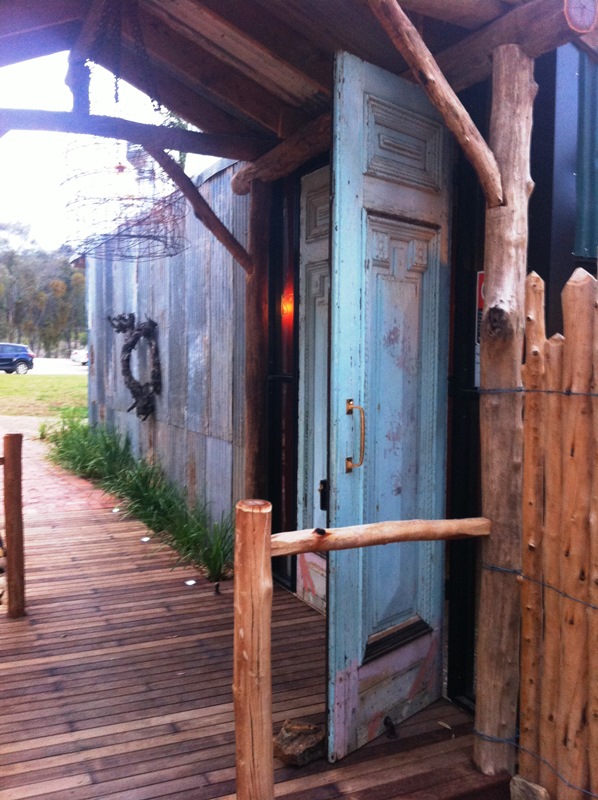Over the Christmas break we headed to Mudgee for a few days, figuring the coast in either direction from Sydney would be too crowded. Heading west of the city over the Blue Mountains and beyond, we reached Mudgee and discovered few other tourists around – I’m sure most were at the beach! It meant the wineries were blissfully uncrowded (some empty), the hotel deals abundant, and the vibe very relaxed. The downsides were that a few eateries were closed, and the weather was super hot. Regardless, it was a great three day stay, filled with much eating and drinking, beautiful views and animal spotting for the kids. After experiencing much of what Mudgee has to offer, here’s an edit of the must-dos:
The Wineries
Wineries are Mudgee’s main drawcard, and there are so, so many to visit. Some are clustered together on the main road past the racecourse, but many are sprawled out on the outskirts of town in every direction, with several worth seeking out. Our favourites were:
+ Logan Wines for stunning views from a glass box perched high above the vineyards.
+ Robert Stein for the beautiful setting, the best Shiraz and the most amazing restaurant of our trip, the few months old Pipeclay Pumphouse.
+ Short Sheep Micro-winery for the personal touch provided by the owner couple proud to show us around and explain their wine-making process, as well as the cute breed of short sheep you can feed (especially fun if you have kids in tow).
+ Botobolar for beautiful wine (including some that are preservative-free) at Mudgee’s oldest organic vineyard. We particularly liked this winery’s reds, after first discovering them at Newtown’s Bloodwood.
+ Lowe Wines for the family-friendly feel, with beautifully organised grounds ripe for exploration, complete with farm animals and fruit plantations (the wine was great too!).
Food + Drink
Like anywhere, there were hits and misses. In a few days we managed to sample quite a lot of Mudgee’s eateries, from cafes to pubs to winery restaurants. We were there just after New Year so a few places that looked and sounded great were closed, like Roth’s Wine Bar, though there were still plenty of places open to choose from. Here’s our pick of the bunch:
Favourite café:
Market Street Café was our favourite breakfast/brunch venue, with nearly everything on the menu sourced in and around Mudgee, from the preserves to the locally raised meat. The ingredients here are of the highest quality and they serve great coffee by Bill’s Beans from nearby Orange.
Favourite restaurant:
The afore-mentioned Pipeclay Pumphouse at Robert Stein is the new Mudgee hotspot and by far our favourite experience of the trip. If you venture to Mudgee you MUST eat here! The setting is amazing (another glass box-like structure making the most of the stunning views) perched over a dam, backed by vineyards, backed by rolling green hills. The food is beautifully executed fine dining, with a 3 course menu at $60 and a seven course degustation at $85. It has it all, from genuine, professional service, beautiful Stein’s wines, a stunning setting and decadent, delicious food.
Favourite beer:
There are so, so many pubs in Mudgee, what seems a disproportionate amount for a small town(!), but the best place for beer has to be the Mudgee Brewing Company. The barn-like microbrewery and restaurant is in the middle of town and features a simple menu of typical Oz bar food and live music, along with an extensive array of beers brewed on site. The IPA was a standout, and the Razz Ale my overall pick, a raspberry-infused brew which is not at all sweet or sickly, just oddly refreshing.
The family factor
We travelled to Mudgee with our kids and they managed to find much to enjoy, though the hotel pool was right up there with their favourite things about the trip. Several of the wineries double as farms, so kids can see alpacas, pat sheep or goats or even explore a chicken coop (visit Lowe Wines for that!). Most have extensive grounds so there’s lots of room to run around outside. Many of the wineries also have some kind of ‘kids’ corner’ with colouring books and chalkboards to keep kids entertained. In town, one of the most kid-friendly cafes is Outside the Square, where there are highchairs, kid-sized tables and even colourful crafts for sale similar to what you’d find in an Oxfam or other NGO-run shop. It felt like Mudgee was really welcoming of kids, despite it’s food and wine-focussed adult appeal.
Where to stay
We stayed at Parklands Resort & Conference Centre, which I highly recommend. We got a great last minute deal so stayed for less than half the usual rate – so do that if you can! It’s located across from the racecourse on sprawling grounds on the edge of town, and is just at the start of the main road to the wineries. It has an oversized indoor pool (which was a godsend on one 42 degree day!) along with a Jacuzzi and sauna, and the rooms are really spacious. Ours had a double bed, a single bed and a foldout couch that could sleep two, so it was great for our family of four but could have really comfortably slept five! For a boutique hotel option if sans-kids, De Russie Suites looks gorgeous.










